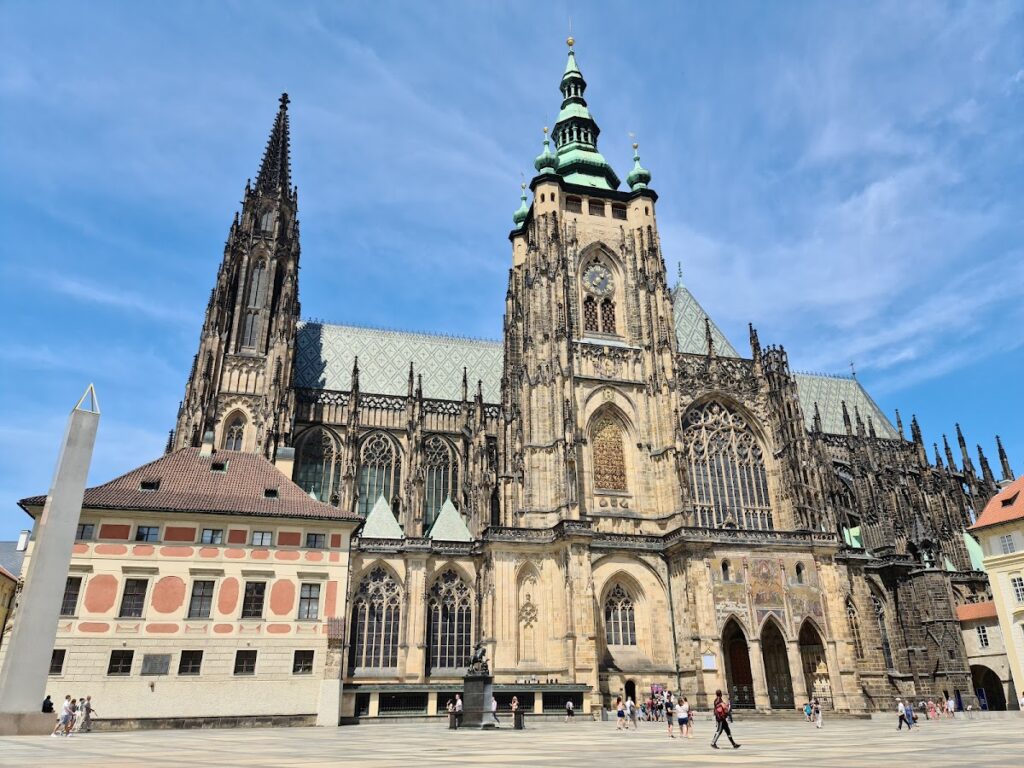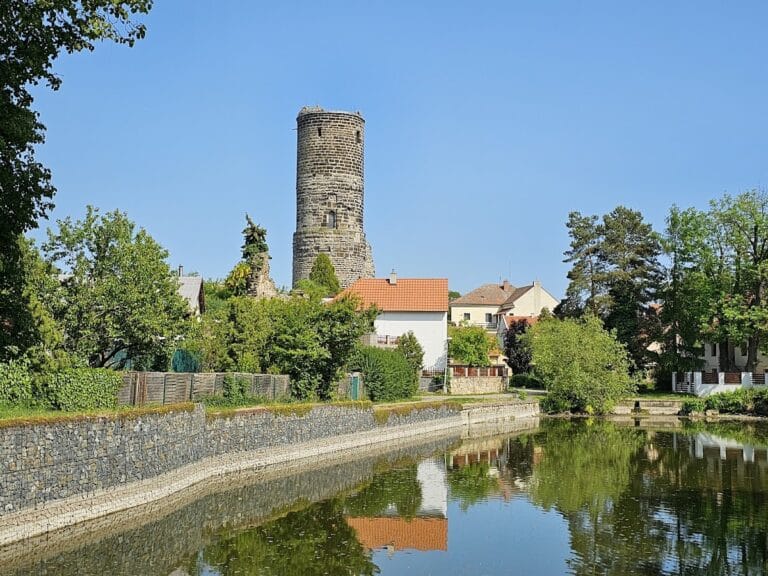Prague Castle: Historic Seat of Czech Power and Culture
Visitor Information
Google Rating: 4.7
Popularity: Very High
Google Maps: View on Google Maps
Official Website: www.hrad.cz
Country: Czechia
Civilization: Medieval European
Remains: Military
History
Prague Castle is situated in Prague 1, Czech Republic, and was originally established by early Slavic inhabitants in the 9th century. Founded as a fortified settlement known as a hradiště, it occupied a strategic rocky promontory overlooking the Vltava River, becoming the center of power for Czech princes and later kings.
Archaeological discoveries reveal that the site was inhabited long before the castle’s medieval foundation, with traces of Neolithic settlements and various cultures marked by distinctive ceramics. Notably, a richly furnished warrior’s burial from the late 9th century uncovered in 1928 demonstrates the presence of high-status individuals before the rise of the Prěmyslid dynasty, which would come to dominate the region.
During the 9th and 10th centuries, rulers such as Spytihněv I and II reinforced the early wooden defenses with stone constructions. The castle’s religious significance grew as important buildings like the rotunda of St. Vitus and the basilica of St. George were erected, the latter serving as the principal church until 973. By the 12th century under Duke Soběslav I, the settlement evolved into a stone fortress featuring multiple gates and defensive towers, reflecting its increasing military importance.
The castle’s prominence expanded further in the 13th and 14th centuries as rulers including Prěmysl Otakar II and members of the Luxembourg dynasty, particularly Charles IV, initiated large Gothic building projects. Among these was the cornerstone of the current St. Vitus Cathedral, begun in 1344, which would become the religious heart of the complex. Prague Castle occasionally served as a residence for Holy Roman Emperors, reinforcing its status as a political and imperial center.
Under Habsburg rule from the 16th century onward, the castle underwent Renaissance and Baroque transformations. Emperor Rudolf II made it a cultural hub near the end of the 1500s, although after his death the site gradually lost its role as the main royal residence. Despite suffering damage from fires in 1541 and conflicts during the Thirty Years’ War, Prague Castle was repeatedly repaired and modernized, including extensive 18th-century Baroque renovations carried out by architect Niccolò Pacassi.
In the 20th century, following the creation of Czechoslovakia, the castle was repurposed as the official residence of the president of the new republic. Architect Jožé Plečnik contributed significant modern interventions that complemented the historic fabric, redesigning courtyards and adding monumental colonnades. Subsequent presidents, including Václav Havel, continued restoration efforts, preserving the castle’s role as a symbol of Czech statehood and heritage.
Remains
Prague Castle extends over roughly 7.3 hectares in an elongated complex approximately 570 meters long and 130 meters wide, making it one of the largest ancient castles worldwide. Its layout features four main courtyards, progressing from the First Courtyard—also known as the Court of Honor—toward the deeper castle interior. The Baroque façades around the First Courtyard, designed by Niccolò Pacassi, display military reliefs that underscore its defensive past.
Religious architecture dominates the site, most notably the Gothic St. Vitus Cathedral. This cathedral’s soaring South Tower reaches nearly 97 meters and is capped by a Baroque dome added in later centuries. Inside, the cathedral safeguards royal tombs and the richly adorned St. Wenceslas Chapel, decorated with semi-precious stones. The Romanesque Basilica of St. George, identified by its distinctive twin white towers, predates much of the Gothic work and served as the main church for centuries. Smaller sacred structures such as the Chapel of the Holy Cross and the Church of All Saints add to the complex’s religious significance.
The castle’s fortifications include several towers with varied historical functions. The Black Tower and the White Towers offered defensive strength, while the Daliborka Tower was known as a prison in its later history. The Powder Tower, called Mihulka, housed gunpowder supplies. Surrounding the western edge lies a formidable moat roughly 30 meters deep and 24 meters wide, enhancing the castle’s defenses against sieges.
Among secular spaces, Vladislav Hall stands out for its impressive size and engineering. Constructed around 1500 under Vladislav Jagellonský’s reign, this vast vaulted hall measures 62 meters in length with a height of 13 meters. It is notable for its ribbed vaulting supported without internal columns and Renaissance portals dated to 1493. The hall features the Knight’s Staircase, a grand entrance designed to allow horses inside for ceremonial occasions.
Renaissance and Baroque eras contributed additional elements such as the Royal Summer Palace, known as the Belvedere of Queen Anne, and the Royal Garden, which includes the Singing Fountain cast by Tomáš Jaroš. The Spanish Hall exhibits lavish gilded stucco decorations and remarkable proportions. Palaces such as the Old and New Royal Palaces, including Ferdinand’s Palace, and the Lobkowicz Palace surround the courtyards connected by arcades and galleries to support court life.
A distinctive feature is the Golden Lane, a narrow street along the northern outer wall lined with small houses initially built for castle guards. Over time, these dwellings accommodated artisans and less affluent residents. Today, these structures remain as preserved examples of medieval habitation within the fortress.
In the 20th century, Jožé Plečnik introduced thoughtful interventions that blend modern aesthetics with historical context. His work includes the redesign of courtyard pavements, the creation of monumental Ionic colonnades linking major spaces such as the First Courtyard and Spanish Hall, and new access points to presidential offices and galleries. Plečnik also designed terraces, pergolas, and obelisks within castle gardens that frame views of the city.
Surrounding the castle are extensive gardens and parks, including the Royal Garden, the Deer Moat (Jelení příkop), the Lumbe Garden, and the Bastion Garden. These feature terraced landscapes, fountains, and diverse plantings enhancing the castle’s setting. Archaeological excavations have revealed early medieval foundations, graves, stone and wooden fortifications, and numerous artifacts that offer a window into the castle’s deep historical layers. Many of these elements have been preserved or restored, allowing insight into Prague Castle’s evolution over more than a millennium.










